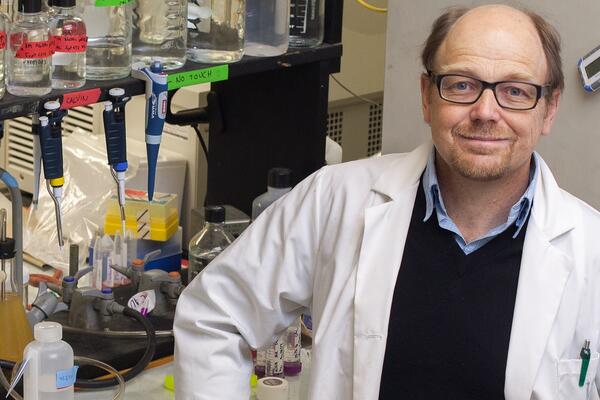
The Right Honourable David Johnston announced as Honorary Chair for the Waterloo Eye Institute
Waterloo’s School of Optometry & Vision Science aims to address the growing national demand for eye care

Waterloo’s School of Optometry & Vision Science aims to address the growing national demand for eye care
By Media RelationsThe University of Waterloo’s School of Optometry & Vision Science (UWOVS) is announcing that The Right Honourable David Johnston, the 28th Governor General of Canada and former UWaterloo president, will serve as Honorary Chair for the School’s $35-million campaign.
The campaign will support the School in its mission to address the growing national demand for eye care, to be at the forefront of vision-science research, and to deliver optometric education taught at North America’s highest scope of practice.
A key mission of the Seeing Beyond campaign is to create the Waterloo Eye Institute (WEI), which would become Canada’s premier eye and vision-care centre. The WEI will harness innovative research and the expertise of the School’s faculty to deliver direct applications to patient care and help address the growing vision-care crisis.
“I believe in the power of collaboration, and I know that this remarkable community within the University will come together to make a world-class institute,” Johnston said. “We are barn-raisers here at Waterloo. We know how to help one another and do things so much larger than ourselves. That’s why I’m happy to make a personal contribution toward this important project.”
Located on Waterloo’s north campus, the WEI will include leading simulation technology to promote education, enhanced clinical facilities that support and expand primary and specialty care (like low vision rehabilitation, dry eye and myopia), two research centres in biomedical sciences and ocular imaging, and a state-of-the-art surgical centre.
Johnston will lend his voice to the initiative as Canada faces a growing vision crisis. One in five Canadians are currently at risk of losing their sight due to eye diseases such as age-related macular degeneration, glaucoma and diabetic retinopathy.
For Johnston, his commitment to championing a world-class eye and vision-care centre at home is a personal passion after watching his mother struggle with vision loss for many years. “If she were here today, I know her vision would have been greatly enhanced if she’d had the chance to visit the WEI.”
Johnston served as the fifth President of the University of Waterloo from 1999 to 2010 before becoming the Governor General of Canada. During his tenure as Waterloo’s President, Johnson oversaw the unprecedented growth of the institution’s global reputation, research capacity and leadership capabilities, paving the way for Waterloo’s emergence as a national leader in talent, ideas, and innovation.
For more information, please visit the Seeing Beyond 2020 website.
About the University of Waterloo’s School of Optometry & Vision Science
The University of Waterloo’s School of Optometry & Vision Science is a world-renowned centre for optometric education, vision science research and clinical care. As Canada’s only English-language Doctor of Optometry (OD) program, UWOVS graduates practice in communities across Canada, ensuring all patients receive the highest level of eye and vision care.

Read more
Here are the people and events behind some of this year’s most compelling Waterloo stories

Read more
Discovery of a thick atmosphere on a lava world reshapes our understanding of rocky exoplanets

Dr. Brian Dixon, professor of biology at the University of Waterloo says there is a link between cold weather and getting sick. (University of Waterloo)
Read more
Waterloo researcher shares why we get sick when the mercury dips
The University of Waterloo acknowledges that much of our work takes place on the traditional territory of the Neutral, Anishinaabeg, and Haudenosaunee peoples. Our main campus is situated on the Haldimand Tract, the land granted to the Six Nations that includes six miles on each side of the Grand River. Our active work toward reconciliation takes place across our campuses through research, learning, teaching, and community building, and is co-ordinated within the Office of Indigenous Relations.